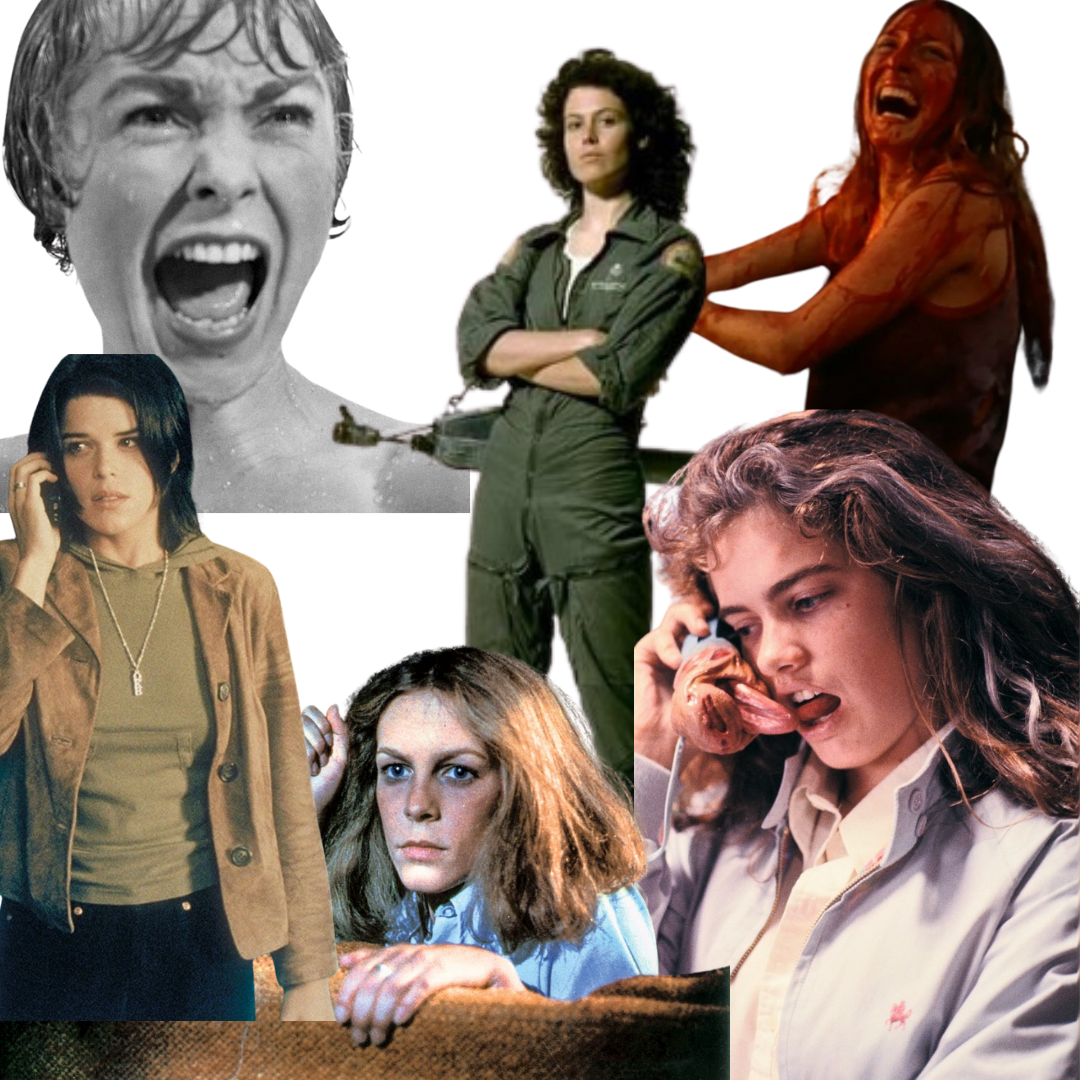The screen fades to black as the sole surviving woman of a brutal massacre exits the house, left alone to unpack the trauma she just endured. Marking one of the best horror tropes and paving the way for female-led horror is the Final Girl trope. The Final Girl in horror movies has been a staple in the genre since Sally Hardesty in “The Texas Chainsaw Massacre” (1974) and her iconic final scene, leaving audiences everywhere petrified of what lurks in the backcountry.
Similar to every other area of society, horror movies were primarily focused on men. Although there are exceptions like “Psycho” (1960), “Rosemary’s Baby” (1968) and “The Birds” (1963), the presence of women in horror did not really take off until the mid-’70s with the rise of the Final Girl. The Final Girl trope offers audiences an empowering female figure who is the only one able to confront and survive a brutal killer, which differs from how women were often portrayed in the media. Although Sally may have been the first Final Girl, people really began to take notice of this trope with the appearance of Laurie Strode (Jamie Lee Curtis) in “Halloween” (1978). And from then on, the trope only continued to grow.
It is hard to compare the iconic Final Girl who jump-started the trope to the ones who have kept it alive today. The Final Girl has evolved so much in recent years, transforming from a girl who simply reacts to a woman who takes action and fights to survive. So, in order to properly rank the best Final Girls, we must split them into two categories: those made before 1996 and those made after. “Scream” (1996) marked the shift from survivor to fighter. Although Final Girl horror movies made before 1996 offered an empowering female lead that helped shift society’s perspective of women, it wasn’t until Sidney Prescott that we received a truly complex and thought-provoking Final Girl.
The Final Girl title of movies before 1996 would have to be given to that of Laurie in “Halloween” and its sequels. Curtis reprised her role in six other “Halloween” films. Not all of these do Laurie justice (“Halloween Resurrection”), but with the more recent additions, we see Laurie grow from simply a survivor to a fierce fighter. She is perhaps the only Final Girl to cross our line of categorization. But no Final Girl discussion could be had without mentioning Ellen Ripley from “Alien” (1979), Nancy Thompson from “A Nightmare on Elm Street” (1984) and of course, the aforementioned Sally from “The Texas Chainsaw Massacre” (1974).
Since 1996, we have had a variety of unique Final Girls, but the top position is tied by four. Luckily, they all exist within the same franchise. “Scream,” much like “Halloween,” changed the genre and started an iconic franchise. “Scream” (1996) gave us Sidney Prescott and Gale Weathers, along with Sam and Tara Carpenter from “Scream” (2022). All of which showcase complex women with the willingness to fight to survive. Since Sidney and Gale’s arrival to the genre, we have seen a multitude of Final Girls. Most notably, Sarah Carter in “The Descent” (2005), Erin Hardson in “You’re Next” (2011), Dani Ardor in “Midsommar” (2019) and Maxine Minx in the “X” trilogy (2022-24). With the recent addition of Sam and Tara, a larger conversation has been brought to the forefront about diversity in horror.
Within all media, but specifically horror, representation of people of color has always either lacked or been negative. In the late 1990s and early 2000s, we began to see more representation, but never in the lead role. We see Maureen Evans, Phil Stevens and Hallie McDaniel in “Scream 2” (1997) dying due to their association with Sidney. In “I Still Know What You Did Last Summer” (1998), we see Brandy Norwood as Karla Wilson, who only survived with our main character, Julie James. In “The Descent” (2005), Juno Kaplan dies, leaving our sole surviving white woman to deal with the guilt of losing her. In recent years, we have seen more diversity in the Final Girl role. With characters like Makani Young in “There’s Someone Inside Your House” (2021), Emerald Haywood in “Nope” (2022), Naru in “Prey” (2022), Sophie in “Bodies Bodies Bodies” (2022) and Sam and Tara in “Scream” (2022) and “Scream VI” (2023). These films have begun to provide representation but only a few have offered women of color justice.
The Final Girl is not only a quintessential part of the horror genre but is also one of the best tropes that exist today. We have seen the trope evolve to better represent women in general and women of color. But with a lot of room left to grow, there is no doubt that the Final Girl will continue to evolve into something that better reflects the next generation and society.
Christian Phillips, FCRH ’26, is a film and television major from West Palm Beach, Fla.









































































































































































































